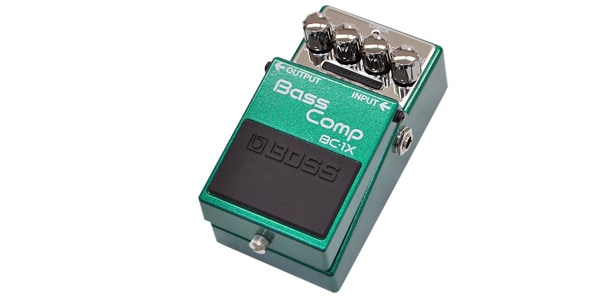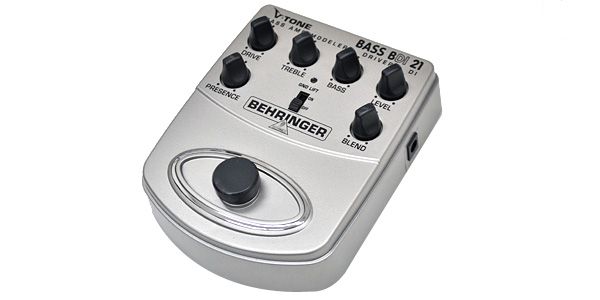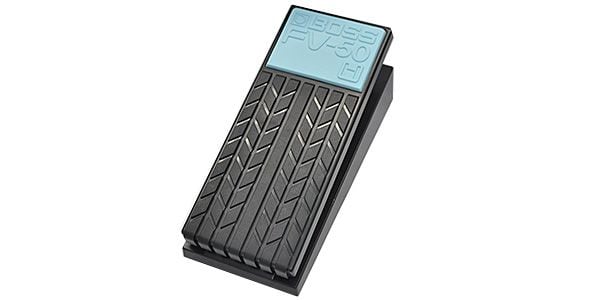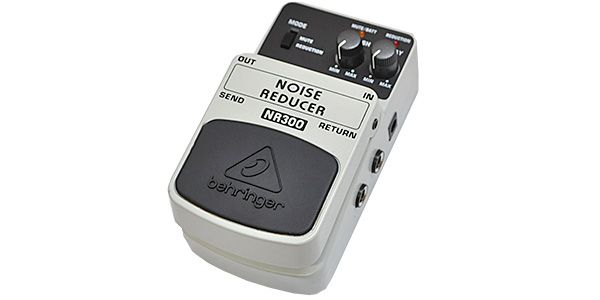Hello, this is Cheena. Continuing from the last time, I would like to talk about the performance of electric bass in brass band.
This time, even though I’m looking at effectors, there’s so much to say, so I'll explain it separately in a basic edition and a practical applications edition.
This is a detailed explanation of the usage of the effector that was roughly written out in the first article researching sound creation.
The first is the compressor, preamplifier, volume pedal, which I noted in the first installment were essential, and noise reduction that will be turned on as needed.
Compressor
The compressor is an effector that suppresses volume variations.
It is also called a limiter / enhancer, and although the detailed specifications are different, the basics are the same, and the volume is the same.
Due to the characteristic of compressing and smoothing loud sounds, it is possible to create sounds that strengthen and stabilize the instrument itself, such as "suppressing loud sounds to raise the overall volume and extending the lingering sound" and "equalizing the volume difference for each string".
Generally, the compressor allows you to adjust Threshold, Attack, Ratio, and Level, but there are other knobs, and simple units do not have Attack.
You can adjust the volume to start compression by playing with the Threshold.
If you raise it, you can compress only the loud sections, but the homogeneity of the volume will decrease.
On the other hand, if the Threshold is low, all the sounds will be compressed, and although homogeneity can be obtained, it will be difficult to adjust the volume on the instrument side.
You can also enhance the lingering sound by lowering the Threshold and raising the Level.
Attack adjusts the time from when a sound is input until it is compressed.
Fast and Slow are often set with a lever switch, but if you set it to Fast, compression will be applied immediately after exceeding the threshold, and if you set it to Slow, it will be the first to play smoothly at a constant volume like tenuto. The attack is uncompressed and then a compressed accented sound (called a percussive sound).

Ratio allows you to control how much the sound is compressed.
It determines how much to compress the section that exceeds the Threshold. If it is 1: 1 it will not be compressed, and if it is set to infinity, it will be possible to reduce it to the Threshold at the end of the time set in Attack.
Level can be used to control the level of the sound. This can be used to enhance sustain or other sound effects.
For music that operates as a root-playing rhythm section with eighth notes, such as pop music, setting Attack to Slow and increasing the compression ratio will enable you to perform well. On the other hand, for quiet songs, jazz-style musical scores, etc., Attack can be set to Fast and the compression ratio can be lowered to an output like a natural string sound.
Preamp
The preamp is distorted by equalizing and gain adjustment similar to those installed on an amp.
Treble boosts or cuts highs, Middle boosts or cuts mids, and Bass boosts or cuts lows. Distortion is applied in Gain, but whether the distortion is overdrive-like or distortion-like depends on the characteristics of each amplifier. If you have Blend, you can mix the original sound with the sound that has passed through the preamp, but there are also things that can mix overdrive and distortion.
For pop music that generally requires bass, it is possible to obtain a clear sound by slightly strengthening Bass and Treble and cutting the middle. However, if you make Treble too strong, it will cause a metallic sound and it will be too noticeable, so find the right range.
For lively songs and rock arrangements, the bass to mid-bass can be strengthened, and the gain can be raised slightly to make the sound crunchier.
If you bring it to a rock-like distortion, the outline of the sound will be blurred and it will be mixed with the tuba etc. and you will not be able to hear it, so find the optimum point.

Volume pedal
As the name suggests, the volume pedal allows you to adjust the volume with the pedal.
The structure is very simple, and it contains the same variable resistor as musical instruments.
In brass band, sudden volume change is often required, so by using the pedal, it is possible to operate the volume change compressed by the compressor as the master volume, and the volume increase such as fp cresc. You can also output long tones with this.
Also, leave it in the depressed state from the beginning and raise the volume according to the attenuation to produce a long tone with a constant volume, or play it half open and use it as a pseudo limiter, and the loud part. You can also fully open it and raise the volume all at once.
You can also set the volume to 0 and eliminate noise and unintended output by fully stepping on during MC or before playing.
Also, since the volume pedal usually has a tuner out, you should always leave the tuner on, which normally cuts off the sound during startup, and suppress the deterioration of sound quality due to passing through the tuner.

Noise reduction
As the name implies, it is an effector that can reduce noise, but it is rarely needed for brass band basses that do not use much distortion and do not require as much volume as a band.
However, it may be necessary depending on the wireless environment of the stage and the usage of surrounding electronic devices.
The effector that is the main cause of bass noise in brass band is not a distortion system such as overdrive, but a correction system such as a compressor.
Since it is a compressor for correcting the volume, some noise is unavoidable, but if the noise is too loud, place it either before or after the compressor placed in the first stage.
When the noise from the instrument is always loud, the noise is cut off at the beginning, and when the compression enhances the volume of the noise, the noise is processed after compression.

Basically, when playing bass in brass band pops, it's okay if you understand up to this point, but in hard rock and big band, you need effectors to further change the sound quality. I will introduce these next time.
For how to connect the effectors, refer to the Sound House cheat sheet and how to connect the effectors in the guitar edition.
Let’s have a good instrument life!


























